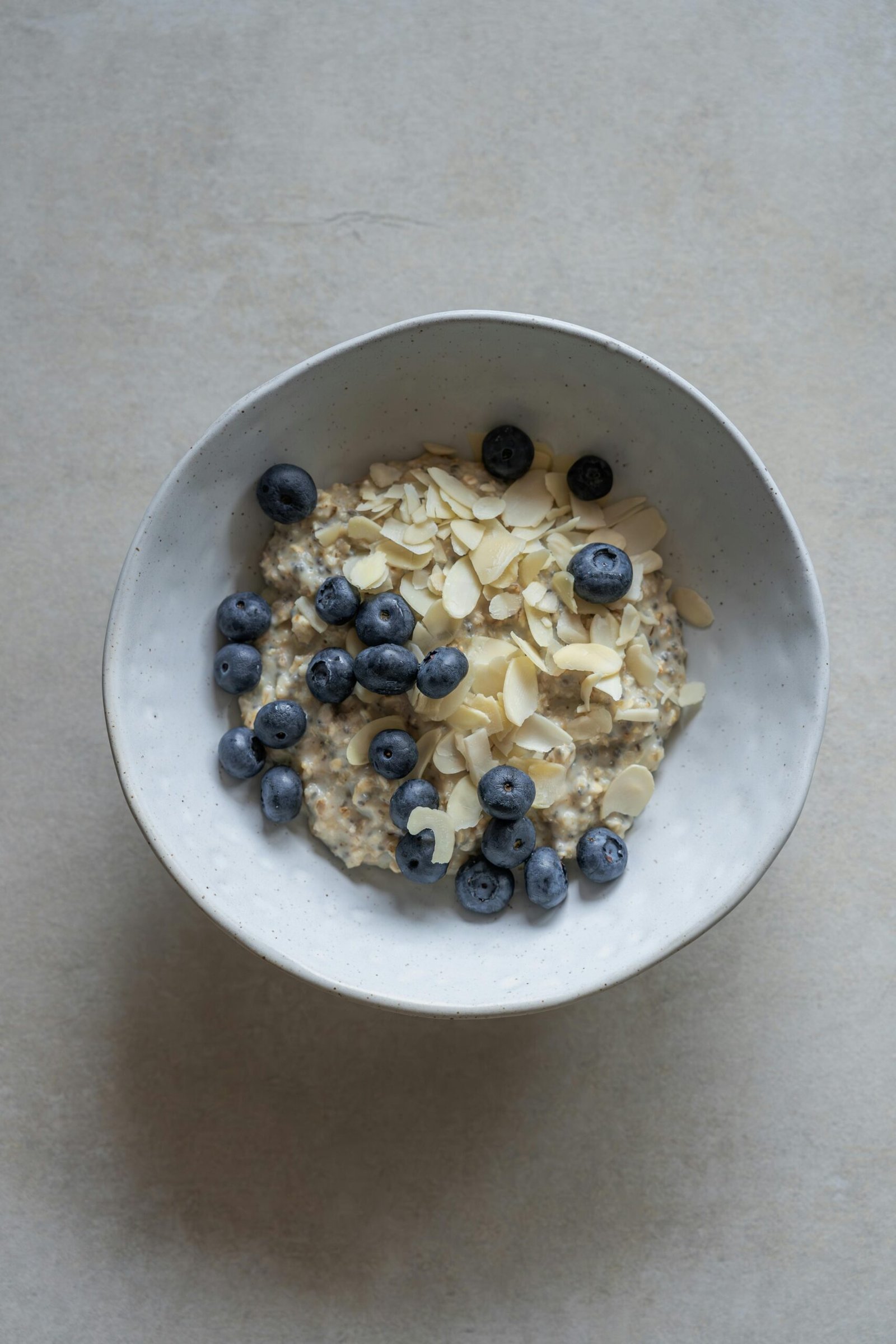Discover how dietary fiber supports heart health, reduces cholesterol, and keeps your arteries clear — backed by science and easy-to-follow tips.

Introduction: Why Fiber Might Be Your Heart’s Best Friend
If you’ve ever thought of fiber as something your grandmother adds to her morning cereal “for digestion,” it’s time to upgrade that mental image. Fiber isn’t just about keeping things moving in your gut — it’s a nutritional powerhouse for your cardiovascular system.
Think of your arteries as flexible highways that carry life-giving blood to every part of your body. Over time, poor diet, lack of activity, and other risk factors can lead to “traffic jams” in these highways — in the form of cholesterol buildup and plaque. This is where fiber comes in. By helping to clear out cholesterol, control blood sugar, and even reduce inflammation, fiber acts like your body’s natural cleanup crew for those vital roads.
In this post, we’ll explore how fiber works its heart-protective magic, the best sources to get it from, and how you can make small, tasty changes to your diet that could have life-changing effects.
Understanding Fiber: More Than Just “Roughage”

Fiber is a type of carbohydrate that your body can’t digest. Instead of breaking down into sugar like other carbs, fiber passes through your digestive system relatively intact — but not without making a big impact on your health along the way.
There are two main types of dietary fiber, each with its own unique benefits for your heart:
- Soluble fiber dissolves in water to form a gel-like substance in your gut. This type is a cholesterol-lowering champion because it binds to LDL (“bad”) cholesterol and helps remove it from your body before it can clog your arteries. You’ll find it in oats, beans, apples, berries, citrus fruits, and certain vegetables.
- Insoluble fiber doesn’t dissolve in water. Instead, it adds bulk to your stool and helps food move efficiently through your digestive tract. While its role in direct cholesterol reduction is smaller, it still plays an important part in overall heart health by promoting a healthy weight and gut microbiome.
Both types matter — and most high-fiber foods contain a mix of both.
How Fiber Protects Your Heart: The Science in Simple Terms
1. Lowers LDL (“Bad”) Cholesterol
When you eat soluble fiber, it forms a gel in your intestines that traps cholesterol-rich bile acids. Your body then uses cholesterol from your blood to replace those lost bile acids, which lowers circulating LDL cholesterol. Think of it as fiber gently sweeping cholesterol out of your system before it can cause harm.
2. Helps Control Blood Sugar
Stable blood sugar levels are key for heart health, especially for people with diabetes or prediabetes. Fiber slows down how quickly sugar is absorbed into your bloodstream, preventing sharp spikes and dips in blood sugar that can damage blood vessels over time.
3. Supports a Healthy Weight
High-fiber foods are naturally more filling, which can help prevent overeating and assist with weight management — another cornerstone of heart disease prevention.
4. Feeds Good Gut Bacteria
Fiber acts as “prebiotic” fuel for beneficial gut bacteria. A healthy gut microbiome has been linked to reduced inflammation and better cardiovascular outcomes.
The Link Between Fiber and Lower Cholesterol
You might be wondering — how strong is the evidence? Studies consistently show that for every 7 grams of soluble fiber added to your daily diet, LDL cholesterol can drop by about 5–10%. That might not sound like a lot, but combined with other healthy habits, it can significantly reduce your long-term risk of heart disease.
Oats, barley, beans, lentils, flaxseeds, and psyllium husk are particularly effective. In fact, psyllium fiber (often sold as a supplement) has been shown to lower LDL cholesterol almost as effectively as some cholesterol-lowering medications when combined with a healthy diet.
How Much Fiber Do You Need for Heart Health?
Most adults should aim for 25–38 grams of total fiber per day, depending on age and gender. Unfortunately, the average intake is less than half of that.
A simple way to remember:
- Fill at least half your plate with vegetables and fruit at every meal.
- Swap refined grains (like white bread) for whole grains (like brown rice, quinoa, or whole-wheat bread).
- Add beans or lentils to soups, salads, and pasta dishes.
Best Heart-Healthy Fiber Foods
Instead of just giving you a list, let’s walk through some of the best options and how to use them in everyday life.
- Oats and Barley: Perfect for breakfast porridge or in soups. Their beta-glucan fiber is especially good at lowering cholesterol.
- Beans and Lentils: Black beans in tacos, lentil soup, chickpeas in salads — they’re versatile, inexpensive, and fiber-rich.
- Fruits: Apples, pears, oranges, and berries offer both soluble and insoluble fiber, plus antioxidants that further protect your heart.
- Vegetables: Broccoli, carrots, Brussels sprouts, and artichokes are all high in fiber and nutrients.
Seeds: Flaxseeds and chia seeds can be sprinkled over yogurt, blended into smoothies, or added to baked goods for an extra heart boost.
Real-Life Story: A Small Change With Big Impact
Take Laura, a 52-year-old office manager. Her cholesterol was creeping up, and her doctor suggested she make dietary changes before starting medication. Laura swapped her usual breakfast of white toast and butter for oatmeal with berries and a sprinkle of flaxseed. She replaced her lunchtime chips with baby carrots and hummus, and added a lentil-based dinner twice a week.
Six months later, her LDL cholesterol had dropped by 15 points — without other major changes. Laura’s story isn’t unique; it’s a real-life example of how small, consistent dietary shifts can have a meaningful impact on heart health.
When to Seek Medical Evaluation
If you have a family history of high cholesterol or heart disease, or if you’ve had abnormal blood test results, it’s worth discussing your diet — including your fiber intake — with a healthcare professional. While fiber can be powerful, it’s only one part of the heart health puzzle. Regular checkups, blood pressure monitoring, and other preventive steps are equally important.
The Future of Fiber and Heart Health
If your watch says you might have AFib, it’s not the end of the world — but it’s not something to ignore, either. The safest next step is to take that information to a heart specialist. They can run proper tests to confirm what’s going on.
Even if you don’t get an alert, but you notice ongoing palpitations, dizziness, or unusual tiredness, it’s worth booking a check-up. Think of it as giving yourself peace of mind — and possibly preventing future problems.
The Future of Wearable Heart Tech
Research into fiber’s benefits is expanding beyond cholesterol. Scientists are exploring how specific types of fiber influence inflammation, blood pressure, and even the risk of heart failure. Personalized nutrition — tailoring fiber intake to your gut microbiome — may be the next frontier.
Takeaway: Your Heart Loves Fiber
Your heart works tirelessly for you — and adding more fiber to your diet is one of the simplest, most effective ways to return the favor. You don’t need drastic changes; start by making one swap a day, and build from there. Over time, those little steps can add up to a lifetime of stronger heart health.
References
- U.S. National Library of Medicine – Dietary Fiber and Cardiovascular Health
- American College of Cardiology – Nutrition and Heart Disease Prevention
- Harvard T.H. Chan School of Public Health – Fiber: The Evidence
National Institutes of Health – Fiber and Cholesterol
Disclaimer
This article is for educational purposes only and should not replace professional medical advice. Always consult your healthcare provider with any questions about your health or before making significant dietary changes.









